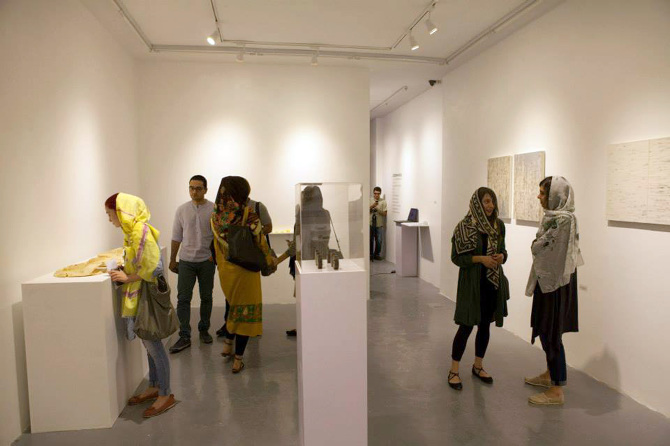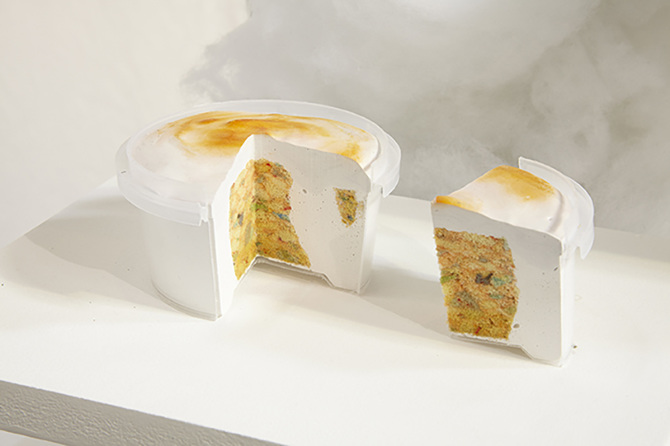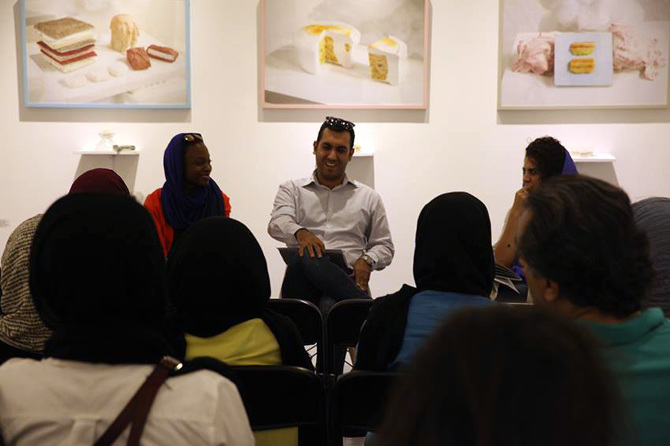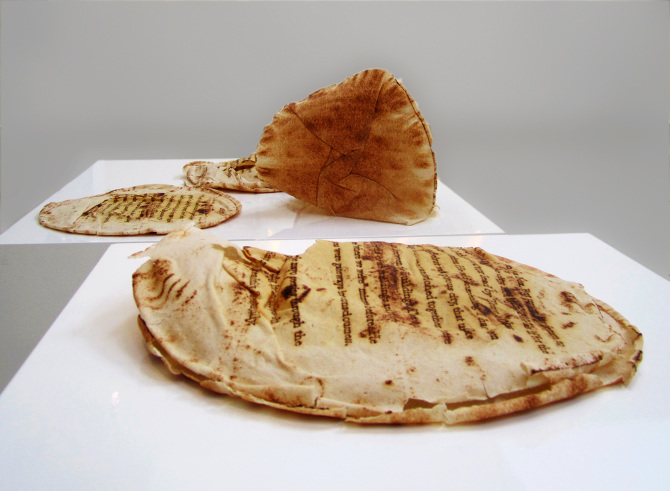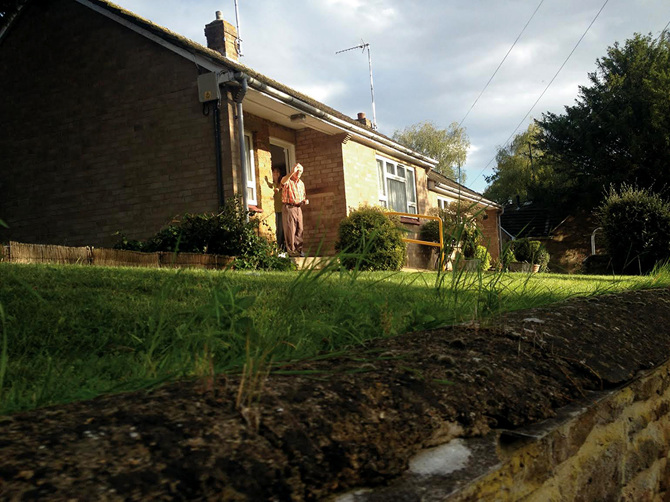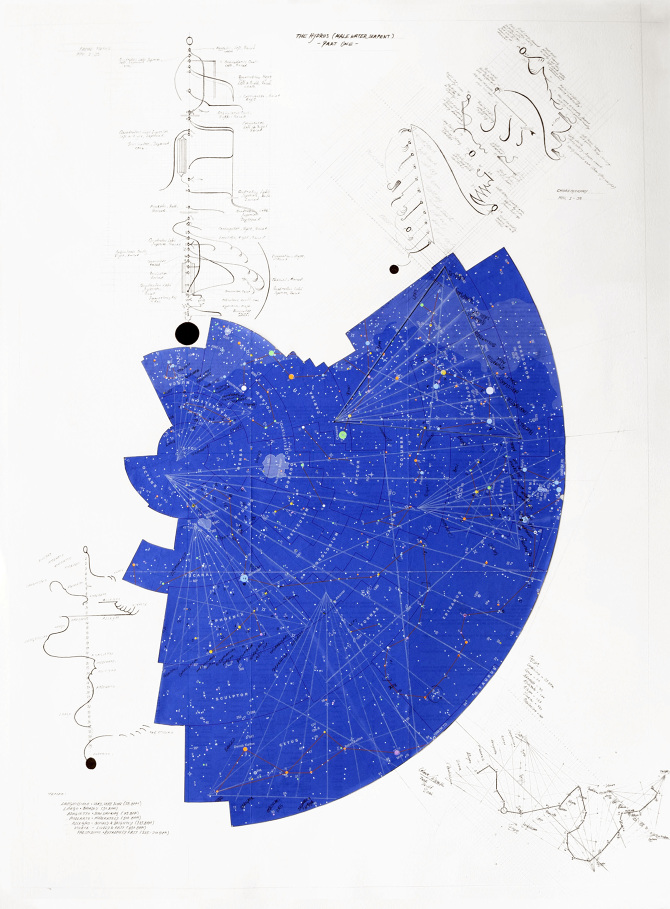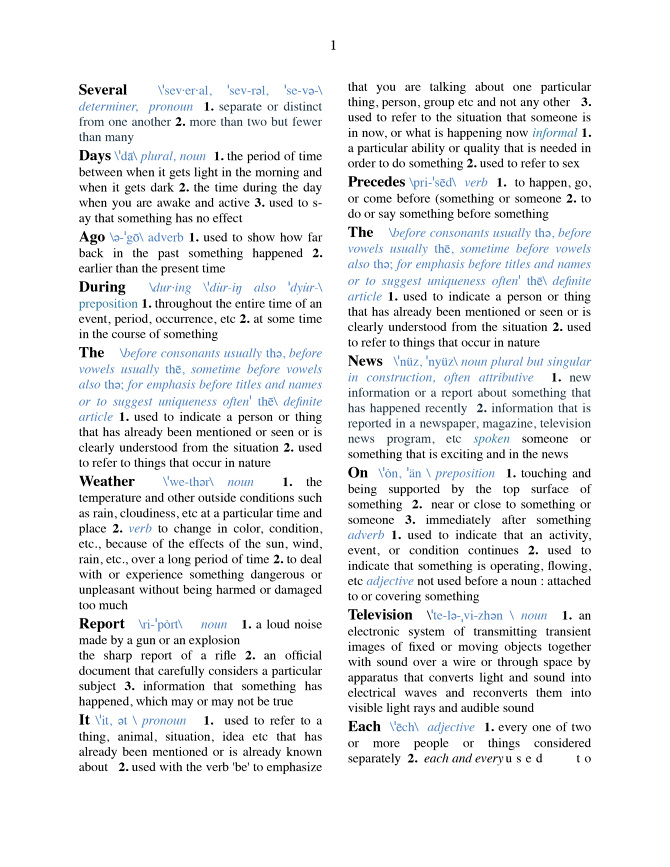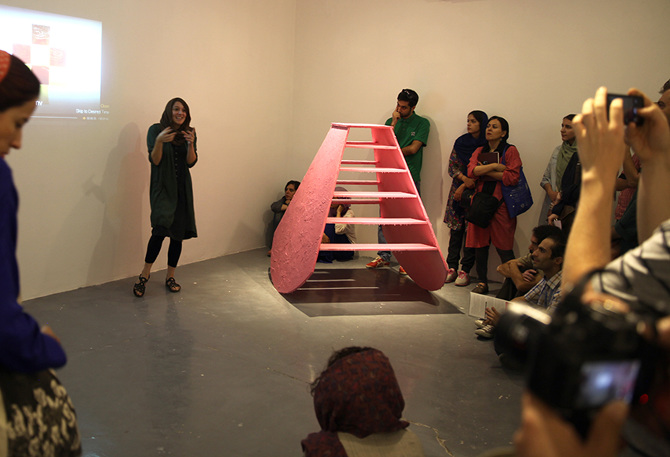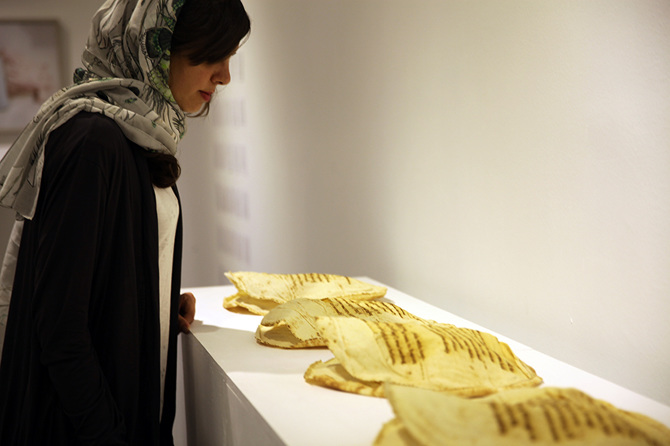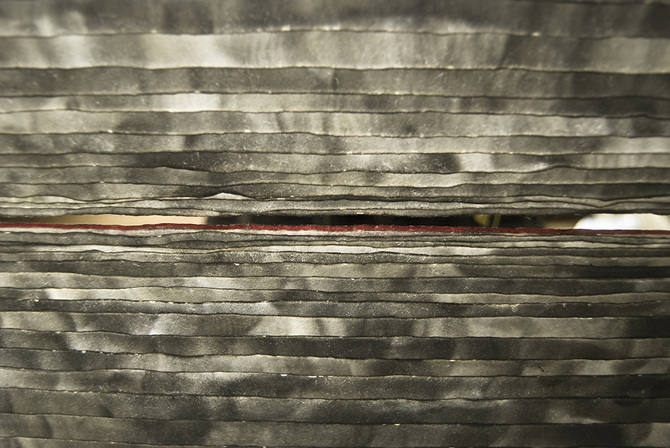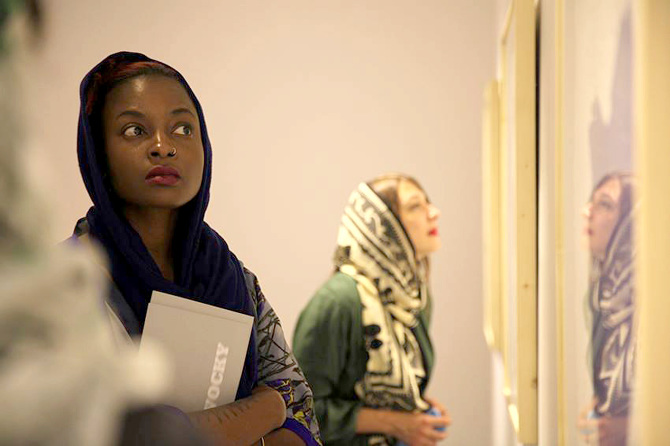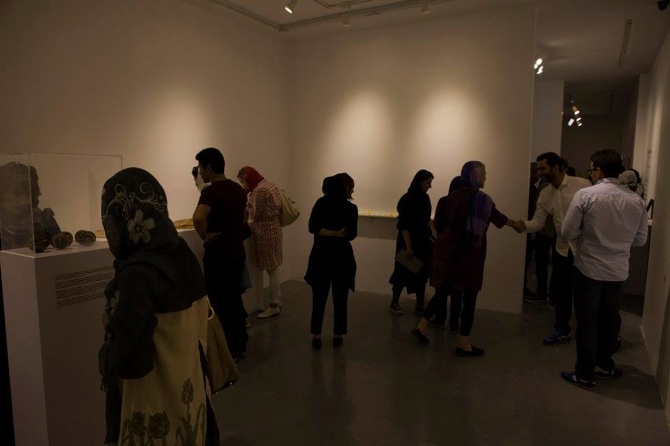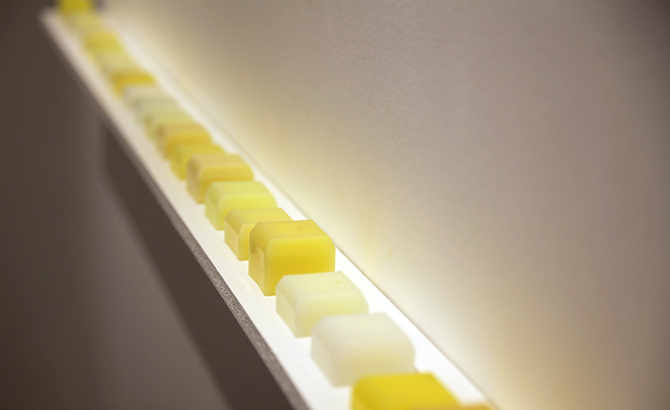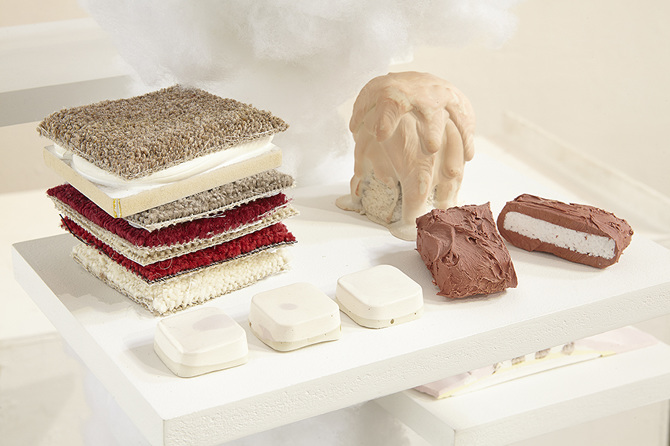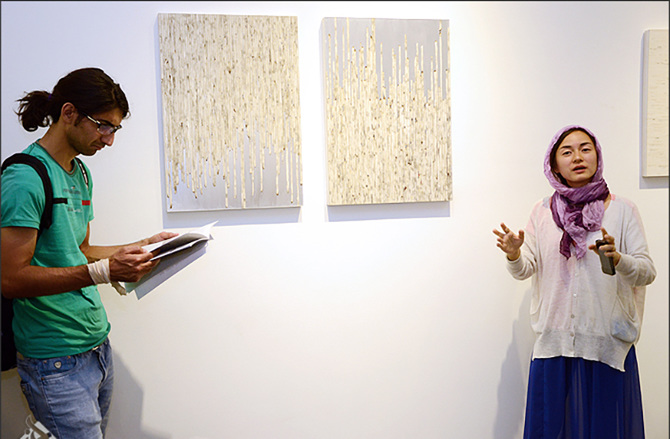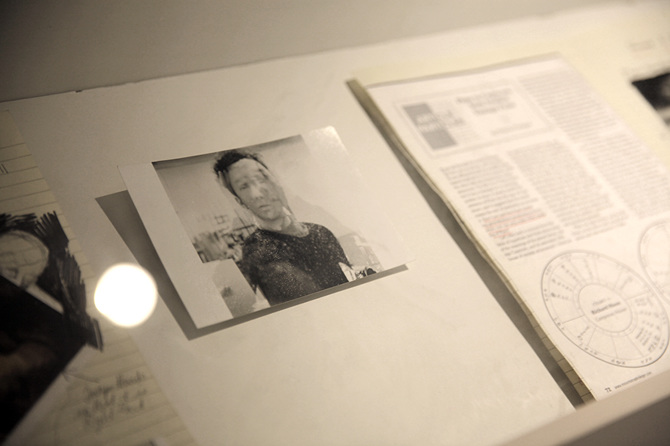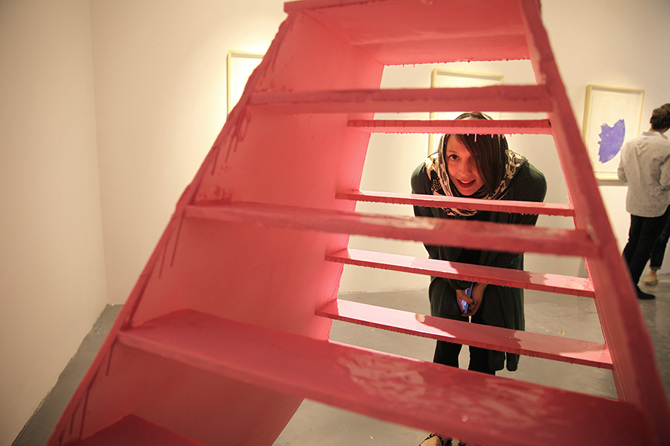Jabberwocky
Curated by Ghazaleh Avarzamani
24 July - 24 August 2015
Mira Avarzamani, Yi Dai, Nooshin Farhid, Matthew Humphreys, Christine Kettaneh, Patricia Pisanelli, Jakob Rowlinson
Ab/Anbar Gallery - Tehran, Iran
Jabberwocky |ˈdʒabəˌwɒki| is a nonsensical poem written by Lewis Carroll taken from his book, Through the Looking Glass, which was written in 1871 as a sequel to Alice inWonderland. The plot centres on Alice's discovery of a book written in an intelligible language and today, Jabberwocky is lauded as one of the greatest nonsense poems ever written in the English language due to its playful, whimsical and witty use of words.
Taking this poem as a point of departure, the exhibition Jabberwocky explores performativity of dialogue and language through the works of seven international artists. These artist's preoccupation with language position it as a self-analysing structure, a source of political, metaphysical and even sexual emancipation. Through a mix of high and low-brow culture, ribald humour and esoteric discourse, this exhibition also seeks to address 'the voice' as a political act whilst considering the materiality and origin of language, as well as transcultural and trans-disciplinary questions of language. Through a selection of sculptures, artist books, drawings, installations, performances, poetry and videos, spectators are able to experience the emotional, social and political potential of language and its cognition.
How is the voice connected to the body and identity of the individual? What happens when the spoken word detaches itself from the speaker, the text from its meaning and the sound from the image?
The works on display perform a particular translation of literary tropes, as well as vernacular objects, such as furniture or edible objects, into works that create new semantic relations between text and objects. Central to Jakob Rowlinson’s are ideas around human expression and the ways in which body movements form language and dialogue. He produces choreography for moving the body in a specific, non- narrative way, which allows the audience to freely interpret the context and ideas behind the work. He has developed a body of work through a process called Facial Poetics, which uses the human face as a pseudo-instrument for projecting gestures and emotions.
Nooshin Farhid explores the mutability and intricacy of language by addressing the uncanny, irritating or comical moments produced by misreadings and misunderstandings. Farhid makes distinctive use of text and the portrayal of the human condition both in a direct documentary format and allegorical style. For this exhibition, the artist accords special interest to “anachronism,” which is describes the manner to which the classical, modern and contemporary all be can be aligned to each other—often in unexpected ways—thereby enriching their interpretation and broadening their historical perspectives.
The subject ‘language’ in the works of Patricia Pisanelli acts as pre-text, pre-formed to that which is written or read. She researches the nature of language through an emphasis on its use, cognition and meaning, whilst considering its their relationship with reality. Pisanelli's project is based on the idea of 'Food as Actor', as a way of examining the language of the food industry – and as a way of .examining language itself – through the almost absurd existence of certain products.
The exhibition then explores what is happening to language through its deconstruction and recombination, what desires and hopes can be expressed and what new cultural (dis)connections are established. In his video, Goodbye” (2014), Matthew Humphreys, the poignancy of a farewell is captured to heart-breaking effect, as he departs from his deaf and ageing parents at the doorstep of their house, over a period of three years. There are no staged camera set ups or pre-planned dialogue: it is simply communicating the universality and inevitability of saying goodbye.
The frailties and failure of language are the main core of the works of Christine Kettaneh and Mira Avarzamani. For Kettaneh, artwork is not necessarily intended to be didactic, to send a message or to transmit an opinion. Instead, it is a process of questioning and of forging connections. Mira is interested in the game nature of language in relationship, Avarzamani explores understandings, misunderstandings, interpretations, translations, mistranslations, and transformations within collective memory. In her work she? Constantly questions how we are acting through language and how language acts through us.
Yi Dai's practice focuses on non-verbal forms of language that incorporating abstraction as a means of unifying mark-making with language. Her painting take on the appearance of high abstraction form afar, but on close encounters they reveal themselves as works that have undergone a process of pain-staking labour that produce intricate and indelible marks on surface. Works from her “Archaeology of Water” series, reflects a strong obsession in the materiality of the most mundane things. These paintings are made through treating, arranging, and layering paper. Each mark made by writing lines with water on paper - the most primitive art and writing material, and burning the paper with fire, which dissolves the dry parts and traces along the wet marks, leaving charred edges and sometimes smoke stains.
Through sculpture, photography, installation, performance and video, we aim to define the communicational codes we share beyond the barriers of language, with statement and performativity of its verbal and non-verbal forms and expressions.
Ghazaleh Avarzamani
July 2015
